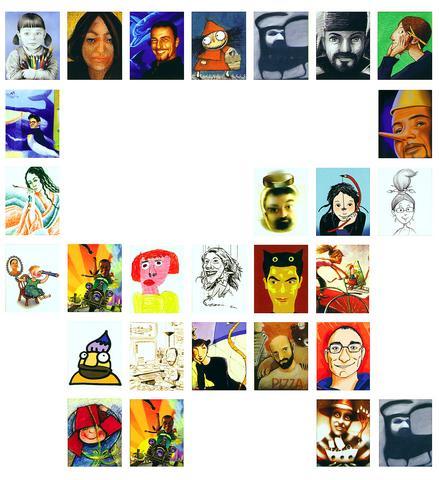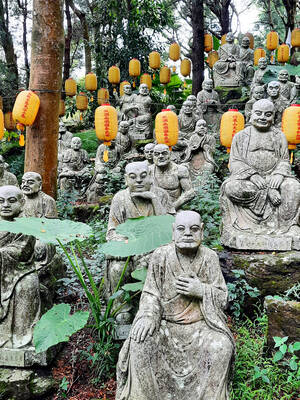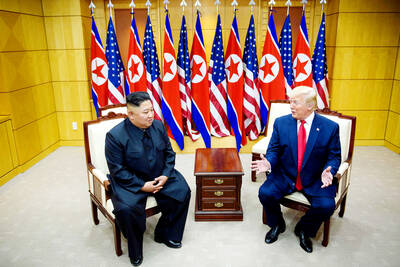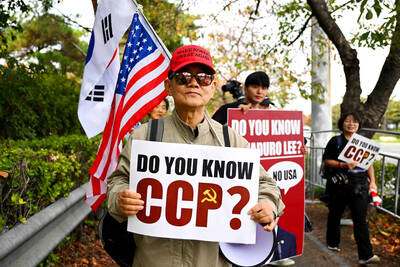The Taipei International Book Exhibition (TIBE,
Jointly organized by Cite Publishing (
Attracting publishing houses from around the world, the annual event has become Asia's largest and the world's fourth-largest international book exhibition since its inaugural show in 1987. This year a total of 925 publishing houses representing 51 countries are set to fill 2,078 booths at TWTC's I and II exhibition halls.

Although this is a slight drop in last year's record-breaking figures, which saw 925 publishing houses displaying their tomes in 2,092 booths, this year's TIBE has been touted by organizers as the most "reader friendly" in the event's history.
In contrast to previous TIBEs, where entrance to the event for the opening two days was restricted to those within the publishing industry, this year will see the entire six-day event open to the general book-reading public. The move is expected to substantially boost the number of visitors and organizers anticipate a huge turnout. They are already predicting the number of visitors will be between 250,000 and 300,000 over the six days.
"This year's TIBE is not the largest, but we do expect it to attract more visitors than ever before. There are over 2,000 stalls, many of which represent local publishing, which is a main feature of this years event," said Chairman of the TIBE Organizing Committee Jan Hung-tze (詹宏志). "There are also many special events focusing on special topics, which will bring together local and international publishing houses."
In order to appeal to the large number of visitors expected at TIBE 2004, the show has been divided into six major exhibition areas, the largest and most extensive of which is the publications area. This area includes the international exhibitors' area, where foreign exhibitors representing publishing houses from the Asia-Pacific region, Europe, the Americas and Africa will be displaying their wares.
The children's books area will see publishing houses specializing in children's and teen books. There is a general-books area, where both paper and hardback fiction and non-fiction will be available, as well as a spiritual and religious books area, which will include inspirational, philosophical and religious texts. Magazines will also be available this year and have an area of the TWTC set aside for them for first time.
As always, the comic book area is expected to prove one of the event's biggest draws. Under the auspices of the Comic Artist Labor Union in Taipei (
Large numbers of fans of cosplay will be on hand at the comic book pavilion dressed up as their favorite comic book characters.
Those feeling left out and not bedecked in costumes or toting the latest in comic book merchandise will be able stock-up on the latest in comic book chic paraphernalia at a special comic book merchandise pavilion.
While organizers are putting an emphasis on the reading public this year, publishing deals and publishing rights negotiations between local and international publishing houses remain a major part of the event.
"TIBE may have changed somewhat this year, with more focus on the reader, but we still hope that the event will bring together publishing houses from all over the world in order to sign deals and develop new contacts," said Huang Hwei-chen (黃輝珍) of the GIO.
"We hope that through the event local publishing houses will continue to develop and raise the standard of international publishing."
Along with books, there will also be a chance for visitors to catch up with the latest in Internet and digital publishing applications, as well as multimedia and e-learning material at the TIBE 2004 Digital Cultural Area.
Unlike previous years, when there was a "Country of Honor," no one country is celebrated at this year's TIBE.
There are, however, several special events and related exhibitions set to take place over the coming week focusing on Italian illustrators.
Art Design Italy: Illustrations features works by 41 Italian illustrators; Art Design: Italy showcases works by 10 Italian designers. The International Publishers and Special Book Design features works by US publishing company Chronicle Books and Corraini Editions from Italy.

When Taiwan was battered by storms this summer, the only crumb of comfort I could take was knowing that some advice I’d drafted several weeks earlier had been correct. Regarding the Southern Cross-Island Highway (南橫公路), a spectacular high-elevation route connecting Taiwan’s southwest with the country’s southeast, I’d written: “The precarious existence of this road cannot be overstated; those hoping to drive or ride all the way across should have a backup plan.” As this article was going to press, the middle section of the highway, between Meishankou (梅山口) in Kaohsiung and Siangyang (向陽) in Taitung County, was still closed to outsiders

US President Donald Trump may have hoped for an impromptu talk with his old friend Kim Jong-un during a recent trip to Asia, but analysts say the increasingly emboldened North Korean despot had few good reasons to join the photo-op. Trump sent repeated overtures to Kim during his barnstorming tour of Asia, saying he was “100 percent” open to a meeting and even bucking decades of US policy by conceding that North Korea was “sort of a nuclear power.” But Pyongyang kept mum on the invitation, instead firing off missiles and sending its foreign minister to Russia and Belarus, with whom it

President William Lai (賴清德) has championed Taiwan as an “AI Island” — an artificial intelligence (AI) hub powering the global tech economy. But without major shifts in talent, funding and strategic direction, this vision risks becoming a static fortress: indispensable, yet immobile and vulnerable. It’s time to reframe Taiwan’s ambition. Time to move from a resource-rich AI island to an AI Armada. Why change metaphors? Because choosing the right metaphor shapes both understanding and strategy. The “AI Island” frames our national ambition as a static fortress that, while valuable, is still vulnerable and reactive. Shifting our metaphor to an “AI Armada”

The Chinese Communist Party (CCP) has a dystopian, radical and dangerous conception of itself. Few are aware of this very fundamental difference between how they view power and how the rest of the world does. Even those of us who have lived in China sometimes fall back into the trap of viewing it through the lens of the power relationships common throughout the rest of the world, instead of understanding the CCP as it conceives of itself. Broadly speaking, the concepts of the people, race, culture, civilization, nation, government and religion are separate, though often overlapping and intertwined. A government